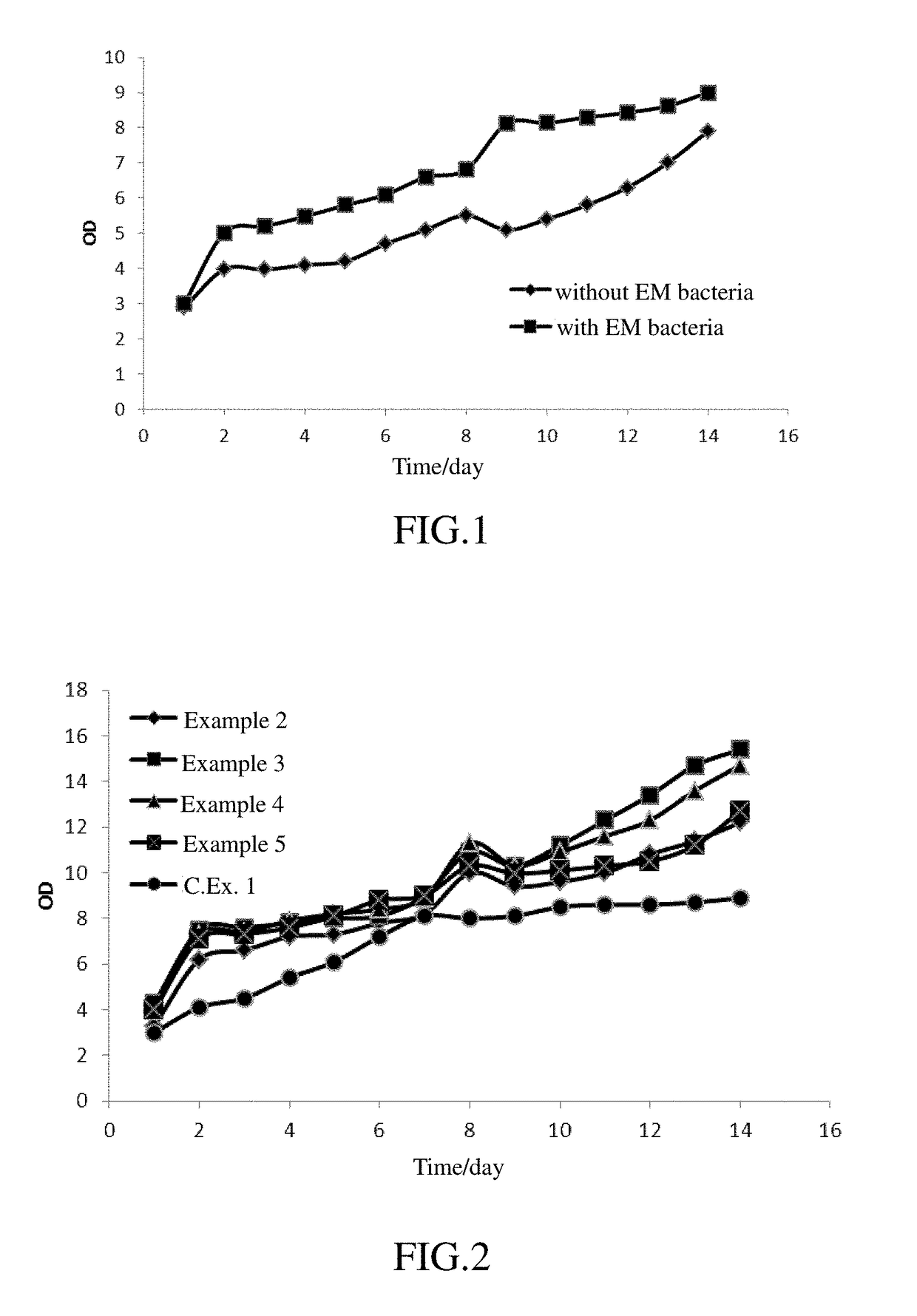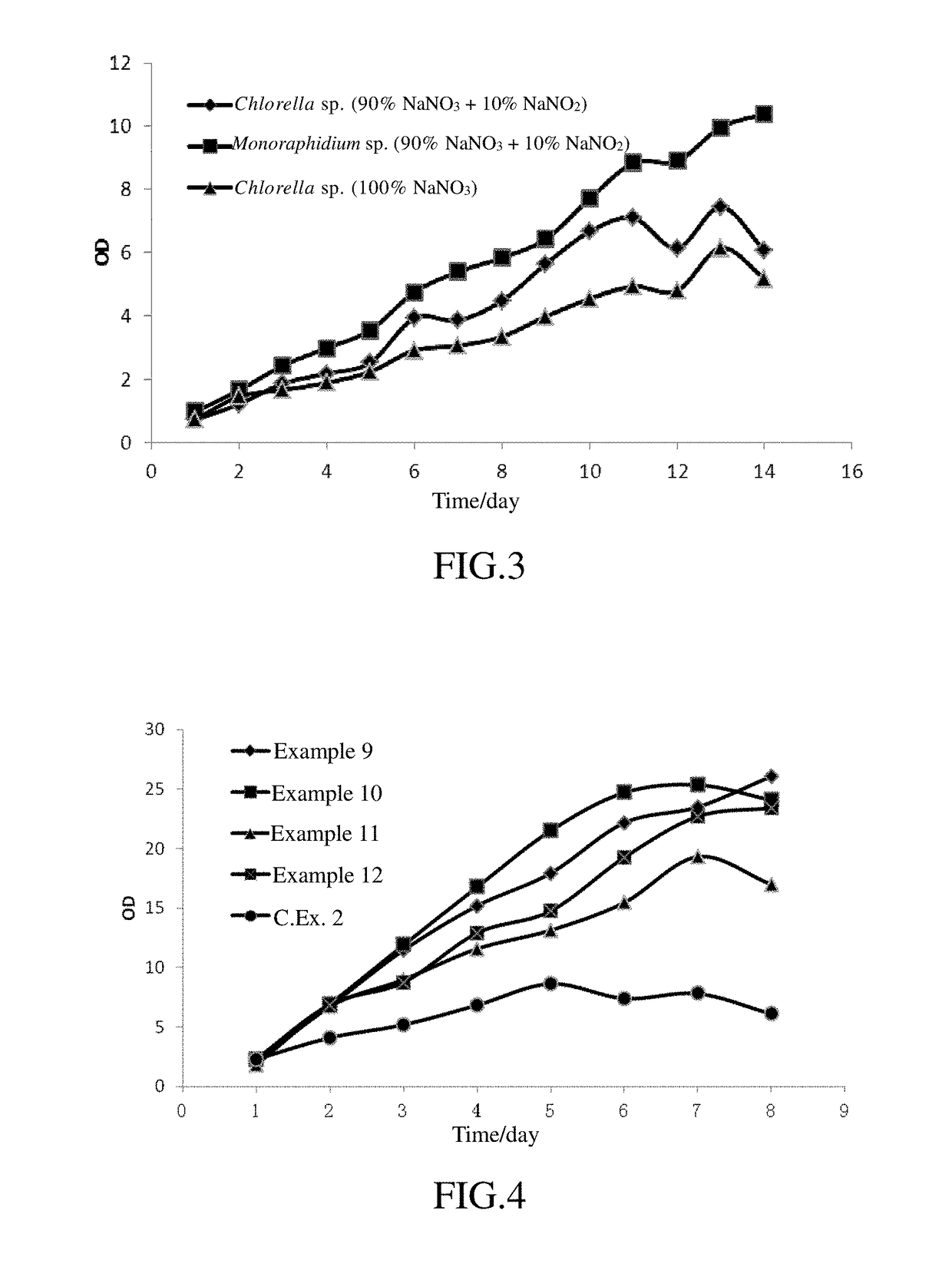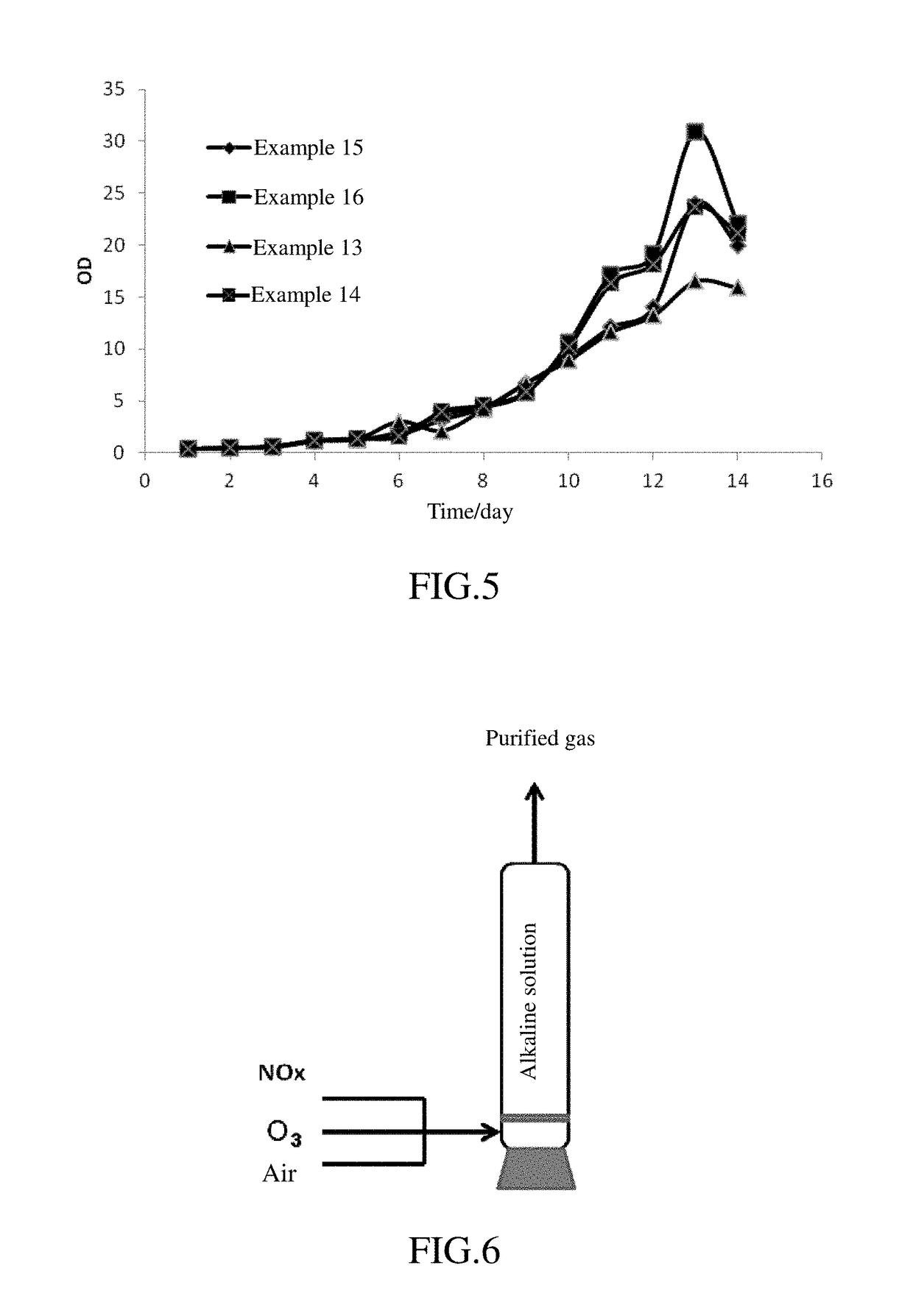A process of cultivating microalgae and a joint method of same with a denitration process
a technology of denitration process and microalgae, which is applied in the field of process of cultivating microalgae and a joint method of same with denitration of industrial waste gas, can solve the problems of high risk of bacteria contamination, failed cultivation, and severe impact on the environmen
- Summary
- Abstract
- Description
- Claims
- Application Information
AI Technical Summary
Benefits of technology
Problems solved by technology
Method used
Image
Examples
example 1
[0188]The example illustrated the impact of the addition of EM bacteria on a photoautotrophic cultivation.
[0189]A BG11 medium (having nutrient ingredients according to Table 1, without sterilization) was used to cultivate Chlorella sp., with a temperature controlled between 20 and 30° C. Compressed air and CO2 were fed for cultivation. When the microalgae suspension had a pH>10, CO2 was fed, while when the microalgae suspension had a pH2 was ceased. Natural sunlight was used for cultivation. The illumination intensity at daytime was controlled up to 60000 lux. The OD680 value of the microalgae suspension was detected every day. Harvest was made after a 14 day continuous cultivation. The feeding of CO2-containing mixed gas was ceased 1 day before the cultivation terminal. Then, a microalgae biomass and a residual cultivation solution were obtained through centrifugal separation. The growth curve of the microalgae was showed in FIG. 1. The two tests in FIG. 1 were substantially same, ...
example 2
[0191]A BG11 medium (having nutrient ingredients according to Table 1, without sterilization) was used to cultivate Chlorella sp., with addition of 2 g / L glucose During the culture, at a temperature controlled between 20 and 30° C. Compressed air and CO2 were fed for cultivation. When the microalgae suspension had a pH>10, CO2 was fed, while when the microalgae suspension had a pH2 was ceased. Natural sunlight was used for cultivation. The illumination intensity at daytime was controlled up to 60000 lux. The OD680 value of the microalgae suspension was detected every day. The growth curve of the microalgae was showed in FIG. 2. The EM was added in an amount of 3.6×106 cells / L microalgae suspension. During the cultivation, the bacteria count of the microalgae suspension monitored was 6 / ml microalgae suspension. Harvest was made after a 14 day continuous cultivation. The feeding of CO2-containing flue gas was ceased one day before the cultivation terminal, and the pH of the microalgae...
example 3
[0192]The example was substantially same as example 2, except that EM was added in an amount of 1.8×107 cells / L microalgae suspension. After the addition of EM, during the stable state of the cultivation, the bacteria count of the microalgae suspension monitored was 7 / ml microalgae suspension. At the cultivation terminal, the pH of the microalgae suspension had increased naturally to 9.3. The growth curve of the microalgae was showed in FIG. 2.
PUM
| Property | Measurement | Unit |
|---|---|---|
| concentration | aaaaa | aaaaa |
| concentration | aaaaa | aaaaa |
| concentration | aaaaa | aaaaa |
Abstract
Description
Claims
Application Information
 Login to View More
Login to View More - R&D
- Intellectual Property
- Life Sciences
- Materials
- Tech Scout
- Unparalleled Data Quality
- Higher Quality Content
- 60% Fewer Hallucinations
Browse by: Latest US Patents, China's latest patents, Technical Efficacy Thesaurus, Application Domain, Technology Topic, Popular Technical Reports.
© 2025 PatSnap. All rights reserved.Legal|Privacy policy|Modern Slavery Act Transparency Statement|Sitemap|About US| Contact US: help@patsnap.com



